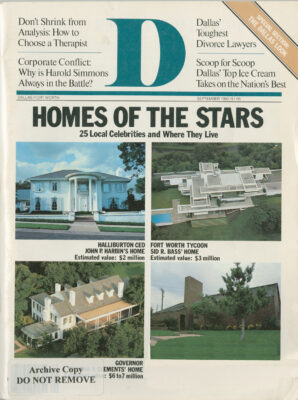WHY, SO OFTEN, do leadership styles militate against what any enterprise needs most: ideas that break new ground, that open new markets, that preserve hard-won advantages? Even more fundamental is the question “Why don’t leaders lead?” Why do so many think that we are there only to be fooled?Worst of all, why do we let them get away with it?
It isn’t as though we’re without examples of leaders who connect us to our best instincts, who have the ineffable ability to make us share a vision, extend our reach and even submerge our own self-interest. But we let ourselves settle for less and end up with those who desperately want to lead but can’t. Desire doesn’t have anything to do with it. Was there ever a president who wanted to lead us more but who finally led us less than Nixon? Nor does that paralyzing combination of piety and sanctimony have anything to do with the true ability to lead. Carter looked unblinkingly into the camera across the eroded terrain of his leadership and told us, yes, there was a malaise in America and we were it.
Leaders, true leaders, have durability. Churchill, more than anyone else, personified that quality. The leadership he gave to England was characterized, in part, by the times he fell from grace and by the triumphs of his return. British historian Robert Rhodes James wrote, “In the years before 1939, he had a following of about two people.” But in their hour of desperation, those two had become a nation as England turned to Churchill on May 10, 1940. His reaction to receiving unprecedented powers from peers who held him in contempt displayed the depth of his confidence: “I was conscious of a profound sense of relief. At last I had the authority to give directions over the whole scene. I felt as if I were walking with destiny and that all my past life had been but a preparation for this hour and this trial.”
MOST OF US encounter the widest diversity of leadership styles in business – from leadership of immersion to leadership of detachment and from leadership by example to leadership by dictum. The industry really determines the style. Experiencing leadership of genius is rare, but Dr. Edwin Land, founder of Polaroid, comes to mind. He led by sheer force of inspiration, which he defined as the sudden cessation of stupidity. He was wrong at times -Polavision was an expensive mistake. But Land always searched for solutions, and as a scientist he understood that solutions were found through a series of mistakes. Now, as he severs almost all his ties with the company he founded, it will be interesting to see whether the cornerstone of Land’s leadership -emphasis on innovation -begins to diminish.
The business leader I admire most, although the phalanxes of professional managers seem to be crowding him out, is the one who is intimately connected to his company’s product. Perhaps he conceived it; at the very least, he was in on the crucial nurturing. His style of leadership seems less formal and more humane. He understands the quirkiness of success, and although he often makes the most demanding leader, he is able to impart a sense of unseen possibilities to his people. And it isn’t always a he. Who has achieved this better in Dallas than Mary Kay Ash or Mary Crowley?
The late Mitch Wilder, the guiding genius of the Amon Carter Museum, displayed the right stuff as a leader for a number of reasons. He was a fine photographer, which accounts for the sensitivity he had toward artists and their work. This contrasts with many of the new breed of museum bureaucrats who think their importance eclipses that of the artists whose work they exhibit. Wilder also knew how to expand the scope of the original objective – without losing sight of the objective: The museum could be more than Remingtons and Russells; it could deal with the entire phenomenon of the West without being hindered by inflexible geographical constraints or rigid definitions of Western art. The breadth of the Amon Carter Museum is Wilder’s legacy, reflecting what leaders accomplish when they refuse to have their vision diluted or deflected.
So what are we looking for most from these people to whom we entrust our futures or our lives? Mostly for a sense of hope even when all reason for hope has vanished. For the hope that where we arc going is better than where we are.
Related Articles

Arts & Entertainment
VideoFest Lives Again Alongside Denton’s Thin Line Fest
Bart Weiss, VideoFest’s founder, has partnered with Thin Line Fest to host two screenings that keep the independent spirit of VideoFest alive.
By Austin Zook

Local News
Poll: Dallas Is Asking Voters for $1.25 Billion. How Do You Feel About It?
The city is asking voters to approve 10 bond propositions that will address a slate of 800 projects. We want to know what you think.

Basketball
Dallas Landing the Wings Is the Coup Eric Johnson’s Committee Needed
There was only one pro team that could realistically be lured to town. And after two years of (very) middling results, the Ad Hoc Committee on Professional Sports Recruitment and Retention delivered.


